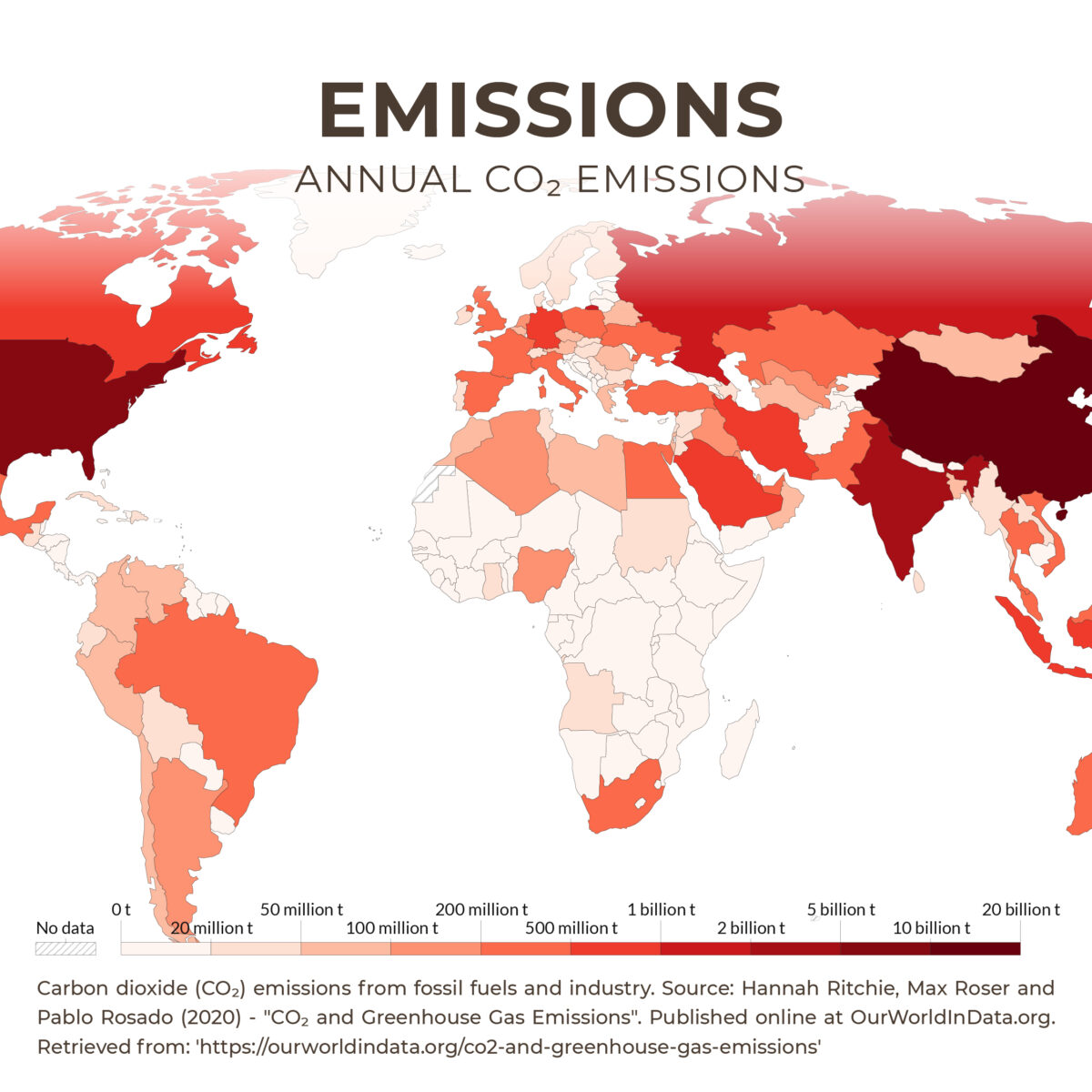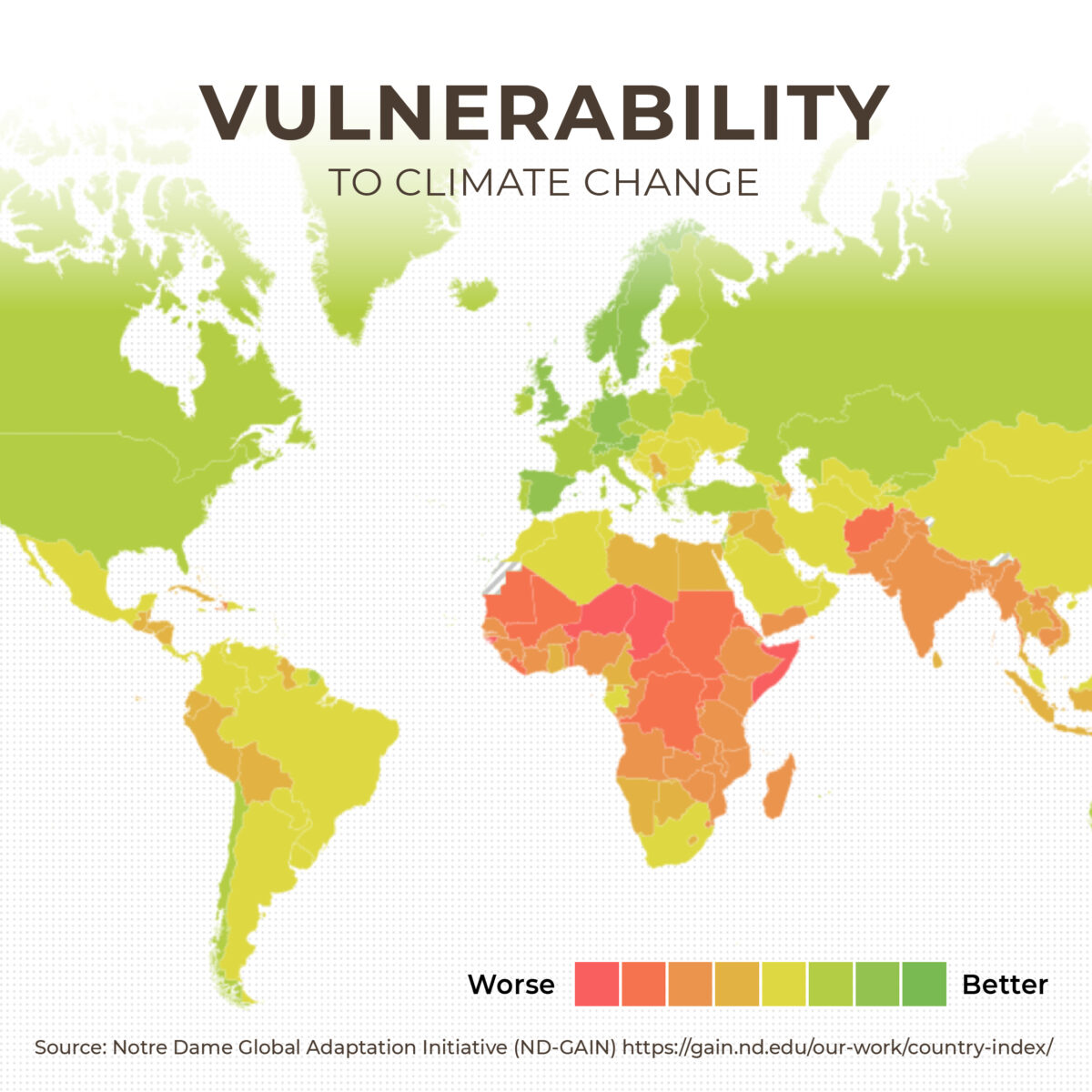By Kate Harawa, Water For People Director of Influence and Scale, Malawi. Header image shows the impacts of Cyclone Freddy in Malawi.
Malawi is being hit hard by climate change. As I write this, many Malawians are still without reliable power and safe drinking water while also fighting a cholera outbreak. The lack of power issue is one of the side effects of Cyclone Freddy (the longest-lasting tropical cyclone—and strongest storm ever observed on Earth—for more than a month). The cholera outbreak is the result of what can happen when communities lack access to clean water and safely managed sanitation. In this case, the impacts of cyclones and flooding last year have led to a health crisis, now compounded by additional extreme weather. A preventable water-borne illness outbreak and abnormal storm pattern are the heartbreaking results of climate change—and a clear example of how some countries are facing these impacts more frequently than others.


Areas of the globe most vulnerable to climate change are the smallest contributors to it. You might think then, that the solution is simple: distribute climate change funding to the areas most vulnerable. Help them better insulate themselves against the CO2 emissions that are being pumped out by countries like China and the United States.
Unfortunately, that’s not what’s happening. Instead, the bulk of the funding ($586B) has gone to "mitigation" or back to the same countries responsible for climate change. And of the remaining $67B, only a paltry $24B has gone to clean water and safe waste disposal. That’s less than 3%.
Blantyre, Malawi is a commercial city that is home to over 800,000 people. Since the 1970s, Blantyre has experienced explosive growth (350%). That growth has meant that basic city infrastructures no longer suffice. In 2009, regional officials began partnering with Water For People to build a universal level of access to sustainable water and sanitation services. But, as climate change worsens, it threatens to undo everything accomplished since 2009 unless we shift to a more climate resilience approach.
We must be able to adapt our approaches in a climate-resilient manner customized to the unique water resources in the Blantyre region. But without funding that focuses on adaption versus mitigation, once again those least responsible for the impacts of climate change are bearing the brunt of the cost of it.
Here are three key actions that can help shift this paradigm:
- Everyone should prioritize water adaptation as a basic human need;
- Focus on the co-benefits adjacent to water adaptation, like preventing deforestation in catchment areas so that when people get access to basic human resources, nature wins as well. The Blantyre-Mulanje Water Fund is one example of supporting water source protection in Malawi.
- Remove water, sanitation, and hygiene (WASH) programming from its insular silo and integrate it into broader water adaptation efforts. A few examples—collaborating with the conservation sector and the movement to promote nature-based solutions for climate adaptation, advocating for WASH in National Adaptation Plans, and partnering with broader water organizations like Global Water Partnership, whose goal is to build knowledge and capacity to improve water management at all levels: global, regional, national and local.
With shifts in approach like these, we can right this injustice as we all charge forward in solving the global water crisis.
